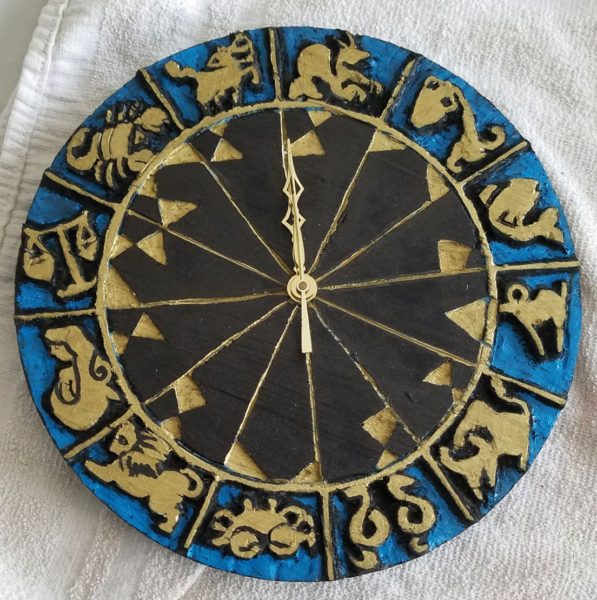I recently grabbed a deal on a vintage zodiac clock (that in the end isn’t functioning) and I realized something I hadn’t paid clear attention to before. The zodiac on the clock, on a vintage pellon print, on a vintage chalkware wall hanging owned by my best friend, and on the examples that initially inspired me to create my own zodiac clock are all arranged counter clockwise.

Where on the clock face the zodiac begins seems to vary in these vintage clocks. When making my zodiac clock, I arranged the signs clockwise and attempted a sort of alignment of the hour and sign. This made sense to me at the time, but noticing the difference I started wondering why what made sense to me was at odds with all the examples I had found.
Though it wasn’t my immediate common knowledge, I am sure it is common knowledge for some that the sun’s position in front of certain constellations – the path of the zodiac – is counter clockwise. And that the earth’s revolution around the sun is counter clockwise. Indeed the earth and moon move counter clockwise (in the Northern hemisphere). Ancient time keeping methods utilized the movement of the sun and the stars to tell time. Sites like Stonehenge tracked time using the sun. So, it’s the modern clock that moves in the opposite direction of all the objects that underpin our concept of time keeping.
One explanation for this is the impact of early time pieces like sundials that tracked time by the shadow the sun cast on the face of the time piece. Newer time keeping devices copied this layout so that all of our timekeeping implements, from wall clocks to wristwatches, track time clockwise even though clockwise is essentially the shadow of time passing counter clockwise.
